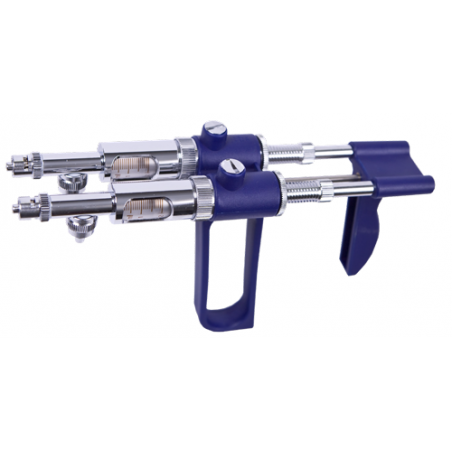Isolation and acclimation are critical steps at the beginning of the productive life of replacement gilts. The objectives of the isolation and acclimation period are preventing the introduction of new pathogens in the farm, maintaining the stability of the herd, and allowing the new animals to adapt to the pathogens of the farm of destination before their introduction and the start of their reproductive lives.
The following table is a simple and visual way to describe the multiple parts that make up the process of introducing replacements on the farm. For every part, it shows its different elements as well as potential factors impacting the final outcome. It should be noted that the categorization of each factor does not imply that the impact is positive or negative.

| Process | Isolation | Acclimation | ||
| Phase | Monitoring | Exposure | Recovery | |
| Objetive | To avoid the introduction of pathogens | To maximize immunity | To minimize excretion | |
| Impact | Quarantine period (facilities/process) | +++ | - | - |
| Localization | +++ | - | - | |
| Health status in the farm of origin | +++ | ++ | + | |
| Rearing on site vs. off site | ++ | +++ | ++ | |
| Rearing flow (all in / all out vs. continuous flow) | ++ | +++ | ++ | |
| Frequency of introduction | - | +++ | +++ | |
| Health status in the farm of destination | - | ++ | +++ | |
| Age at introduction | - | ++ | +++ | |
(Juan Carlos Pinilla, Al Leman Conference 2015)
Acclimation, the key point for farm stability. How to adapt the new replacements to the most common pathogens in the farm?
The most important principle to consider is that the replacements health status should be better than that of the animals in the farm of destination and, at the same time, we must ensure that these replacements are immune to the diseases they'll encounter in the farm of destination. Acclimation protocols should be specific for each farm, and not simply replicate those of other farms in a system.
The two most used strategies during this phase include: vaccination of animals to help them develop acquired immunity, and / or exposure to the farm pathogens so that they develop natural immunity. Some vaccinations are already carried out in the isolation phase in order to protect the animals during the acclimation phase. Likewise, strategic medications are used to minimize the clinical symptoms, but at doses that also allow the new arrivals to become infected.
| Exposure method | Exemples |
| Feedback | Parvovirus, PED, TGE, Rotavirus, other enteric pathogens |
| Inoculation / injection | PRRSv |
| "Seeders"/Infected pigs | Mycoplasma hyopneumoniae, other micoplasmas, Pasteurella |
| Vaccination | PRRSv, PCV2, IAV, Erysipelas, Parvovirus, App |
| Environment / passive | Parvovirus |
"Natural" exposure:
It requires contact with animals from the farm of destination (seeders) and / or feedback. These "seeders" must be excreting the target pathogen(s) we want to challenge our replacements with; for that to happen, the veterinarian must be well acquainted with the epidemiological behaviour of these pathogens. As a general rule, a sow ready for slaughter (primiparous or at first farrowing) for every 20 animals may be sufficient to achieve natural exposure. However, the exact ratio is unscientific and depends on the number of contacts / time, the probability of contact transmission, and the time the "seeders" are excreting.
| Pathogen | Estimated R | Source |
| IAV | 10.4 | Allerson et al, 2012 |
| PRRSV | 2.6 | Charpin et al, 2012 |
| M. hyopneumoniae | 1.16 | Meyns et al, 2004 |
| PCV2 | 5.9 | Andraud et al, 2009 |
(Ratio of transmission of different pathogens in pigs. The R determines the number of "contact" animals that can be infected from a single "infectious" animal)
"Feedback" protocols are especially important to generate maternal immunity against most of the pathogens that cause enteric disorders in farrowing room piglets. Although the application protocol is not an exact science, when properly implemented (sufficient exposure) a dramatic reduction of enteric problems is seen in the offspring.
Recommendations:
-
The duration of the acclimation period will depend on the pathogens we want to use. Generally, a minimum of 4 weeks of isolation and 4 weeks of acclimation is recommended. Remember that adaptation to PRRSV requires an additional 30-day period.

-
Vaccinations must begin one week after the start of isolation to allow the animals to recover after their transport.
-
The number of replacements per year must be restricted. The way to achieve this is by introducing animals of various ages in each group. In order to reach consensus on health and productivity, it is advisable to have two facilities. This will allow us to use an all-in all-out system without loss of productive capacity.
-
Communication between veterinarians is essential to know what we are buying and to work out the best acclimation protocol for our replacements.
-
Each farm must have its own arrival protocol. This requires that the veterinarian be aware of the epidemiology of the diseases that affect the holding (choice of "seeders", time of infection, recovery period, etc.)
-
The period of isolation and acclimation is not negotiable. It is an investment.





